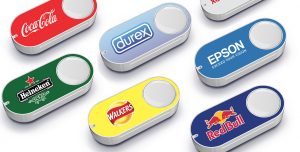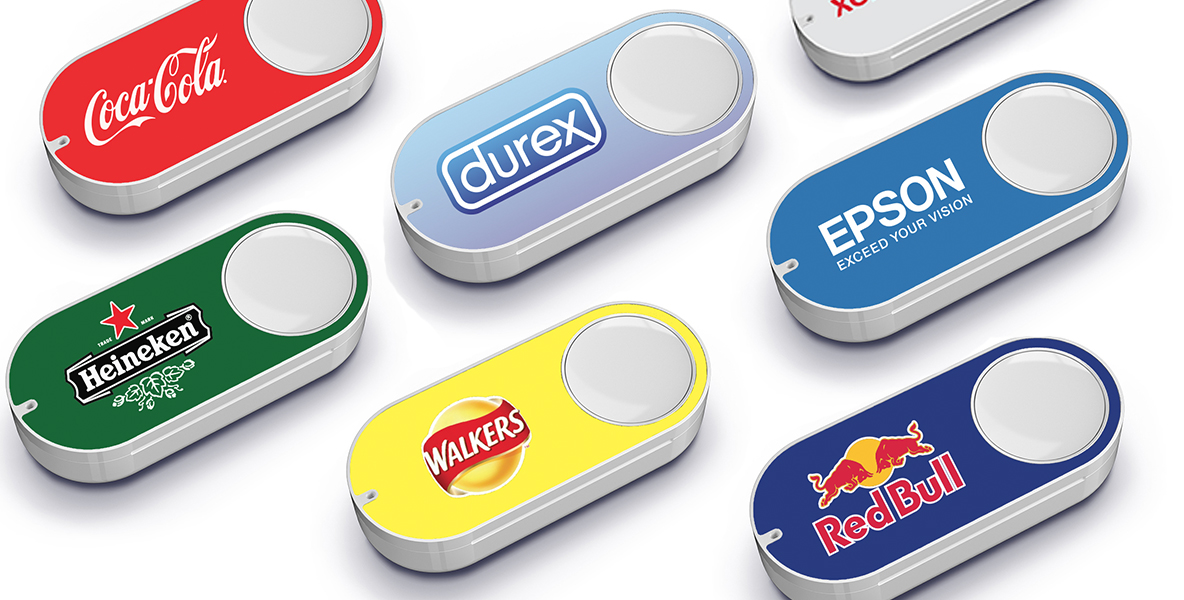Disrupting the Consumer
Amazon UK have  recently announced they are launching “dash buttons” in the UK. What is a dash button? You ask. Well in a nutshell, its a WiFi enabled button that you stick somewhere convenient that then allows you to automatically order a product, literally at the touch of a button. Currently over 40 household names have signed up to the service in the UK including well known branded condoms , pet food and washing powder.
recently announced they are launching “dash buttons” in the UK. What is a dash button? You ask. Well in a nutshell, its a WiFi enabled button that you stick somewhere convenient that then allows you to automatically order a product, literally at the touch of a button. Currently over 40 household names have signed up to the service in the UK including well known branded condoms , pet food and washing powder.
The dash button means you never run out of that product again, right? Imagine the scenario, you are on the loo, down to you last few sheets of toilet roll, simply press the dash button and hey presto, 24 bulk rolls of Andrex turn up the next day through the Amazon prime service. Never get caught short again. For consumers, its the ultimate panic button. Buy, buy again and buy some more. Its the future of retail – no decision making to blur the lines, less choice but more convenience.
How does this affect our future shopping habits though? How will new brands break through to consumers? Will existing brands reduce their quality as they lock people into dash “handcuffs?” How does brand loyalty play out through the dash purchase channel – loyalty becomes a one way relationship in our “on demand” instantaneous lifestyle.
Consumer Risk
Taking away the risk in our shopping habits is surely a good thing? All purchases carry some risk. The risk of being dissatisfied with the product or service, poor quality, finding a better deal later. All of these factors shape our repeat purchase behaviour. The risks increase as the price point of the product increases – buying a car for example.
When I first heard about dash buttons, I thought it was an excellent idea – the marketers dream – the right product, the right price, the right place the right promotion. It ticks all the boxes but also removed a big part of the consumer decision making process. But, are we paralysed by too much choice online now? How many hours have you spent looking for that elusive holiday deal or bargain coupon and ended up not buying anything at all? We all know about “less is more” and nothing could be closer to the truth when thinking about consumer purchases. A well versed example of too much consumer choice blurring the lines is Professor Lyengars “jam study”. Consumers were presented with two jam sampling stations – one carried over 30 types of jam the other only 6. The consumers who used sampling station A with the most choice, converted to buy at 3%. Consumers who used sampling station B with a reduced choice converted at 30%. Large groups of people converged on sample station A, fewer but more discerning people converged around B. The study suggests that people are often overwhelmed by too many choices, which leads to what has been called action paralysis.
Your Brand
So where does this leave us as our “swipe left” society is presented with brands on a daily basis and asked to make decisions? To combat action paralysis, ask your self these questions about your brand.
- what does your brand say to customers?
- how do you ensure your brand is at the forefront of your potential clients minds when making purchase decisions?
- how can you help your customers make the right choices?
It seems obvious – reduce the amount of choices on offer, clearly differentiate between products, don’t bombard your customers with offers – help them by having a clear , simple message.
I don’t know about you but I feel that dash buttons are taking us down a path of programmatic buying that means that brand loyalty will play a bigger and bigger part in our purchasing online from now on. Price becomes irrelevant compared to convenience.

